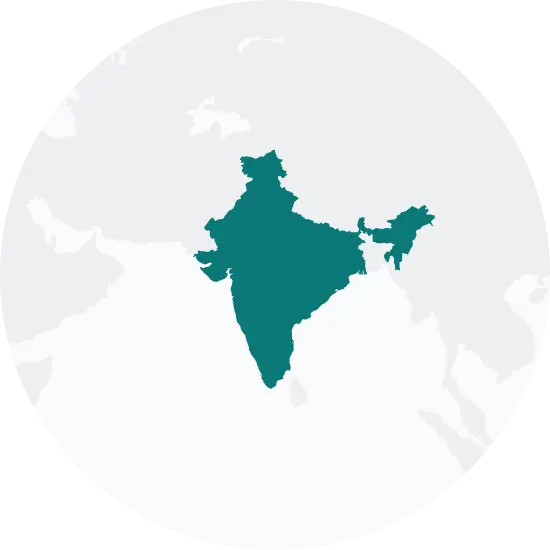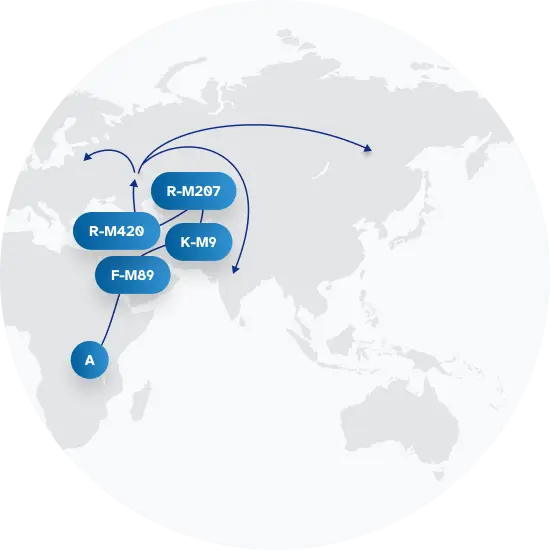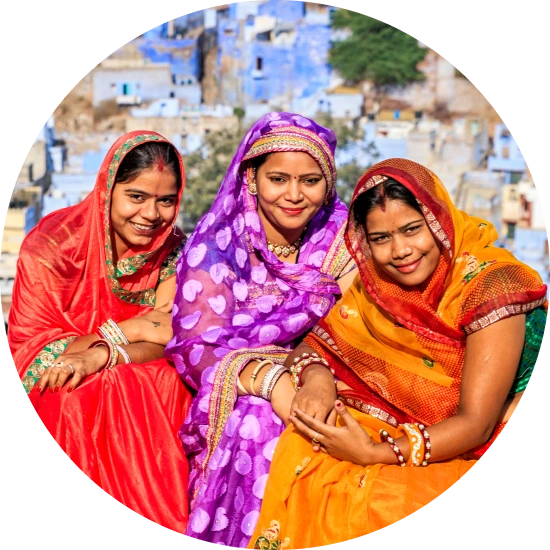Explore the Family Name Bhatt
How common is the last name Bhatt in the United States?
According to data from the Decennial U.S. Census, the popularity of the surname Bhatt has significantly increased between the years 2000 and 2010. In 2000, it was ranked as the 8410th most common name, but by 2010, it had risen to 6363rd place, marking a change of approximately 24.34 percent. The total number of individuals who carry this surname also grew during this period, with a count of 3609 in 2000 expanding to 5349 in 2010. This represents an increase of about 48.21 percent. The proportion of people with the Bhatt surname per 100k also went up by 35.07 percent within these ten years.
| 2000 | 2010 | Change | |
|---|---|---|---|
| Rank | #8,410 | #6,363 | 24.34% |
| Count | 3,609 | 5,349 | 48.21% |
| Proportion per 100k | 1.34 | 1.81 | 35.07% |
Race and Ethnicity of people with the last name Bhatt
Looking at the ethnic identity associated with the Bhatt surname, the Decennial U.S. Census data shows that the vast majority of individuals with this name have an Asian or Pacific Islander background. In 2000, this group made up 90.72 percent of the Bhatts, and this figure rose slightly to 93.25 percent by 2010. There was a noticeable decrease in the percentage of Bhatts identifying with two or more races, with a drop of 54.06 percent over the decade. The proportions of Bhatts with White, Hispanic, Black, or American Indian and Alaskan Native ethnicity all saw changes as well, though these groups remained relatively small portions of the overall makeup of the surname. The most significant growth was seen among those identifying as American Indian and Alaskan Native, albeit from a very small base, increasing by 141.18 percent over the decade.
| 2000 | 2010 | Change | |
|---|---|---|---|
| Asian/Pacific Islander | 90.72% | 93.25% | 2.79% |
| White | 2.83% | 3.08% | 8.83% |
| Two or More Races | 5.29% | 2.43% | -54.06% |
| Hispanic | 0.55% | 0.58% | 5.45% |
| American Indian and Alaskan Native | 0.17% | 0.41% | 141.18% |
| Black | 0.44% | 0.24% | -45.45% |
Bhatt ancestry composition
23andMe computes an ancestry breakdown for each customer. People may have ancestry from just one population or they may have ancestry from several populations. The most commonly-observed ancestry found in people with the surname Bhatt is Northern Indian & Pakistani, which comprises 81.8% of all ancestry found in people with the surname. The next two most common ancestries are Gujarati Patidar (3.9%) and Bengali & Northeast Indian (2.9%). Additional ancestries include Southern Indian & Sri Lankan, Southern Indian Subgroup, British & Irish, French & German, and Central Asian.
Ready to learn more about your ancestry? Get the most comprehensive ancestry breakdown on the market by taking our DNA test. Shop 23andMe
| ANCESTRY BREAKDOWN | COMPOSITION |
|---|---|
| Northern Indian & Pakistani | 81.8% |
| Gujarati Patidar | 3.9% |
| Bengali & Northeast Indian | 2.9% |
| Other | 11.4% |

Possible origins of the surname Bhatt
Your DNA provides clues about where your recent ancestors may have lived. Having many distant relatives in the same location suggests that you may all share common ancestry there. Locations with many distant relatives can also be places where people have migrated recently, such as large cities. If a large number of individuals who share your surname have distant relatives in a specific area, it could indicate a connection between your surname and that location, stemming from either recent ancestral ties or migration.
Based on 23andMe data, people with last name Bhatt have recent ancestry locations spanning a few countries, mostly in India, and Pakistan.
| RECENT ANCESTRY Location | Percentage |
|---|---|
| Gujarat, India | 19.40% |
| Maharashtra, India | 11.80% |
| Punjab, India | 10.80% |
| Sindh, Pakistan | 8.60% |
| Karnataka, India | 7.50% |
What Bhatt haplogroups can tell you
Haplogroups are genetic population groups that share a common ancestor on either your paternal or maternal line. These paternal and maternal haplogroups shed light on your genetic ancestry and help tell the story of your family.
The top paternal haplogroup of people with the surname Bhatt is R-Y7, which is predominantly found among people with Central & South Asian ancestry. Haplogroup R-Y7 is descended from haplogroup R-M420. Other common haplogroups include R-Y6 and J-M241, which are predominantly found among people with Central & South Asian and European ancestry. Other surnames with similar common haplogroups are: Arora, Sharma, Islam, Singh, Joshi, Persaud, Prasad, Desai, Mehta, Malik.
The most common maternal haplogroups of people with Bhatt surname are: M, H, U7. These most commonly trace back to individuals of European ancestry.
 Paternal Haplogroup Origins R-M420
Paternal Haplogroup Origins R-M420Your maternal lineage may be linked to the ancient people of the Indian subcontinent
While Haplogroup M is widespread throughout South and East Asia, it is more diverse on the Indian sub-continent than anywhere else in the world. The high degree of diversity of M in India is likely tied to its ancient arrival here nearly 50,000 years ago. In addition to M2, which is found throughout the subcontinent, there are dozens of haplogroups branching off of M that exist in India. These branches are often connected to specific regions, tribes, or ethnic groups. For example, haplogroup M18 is found among the Oraon peoples of eastern India and Bangladesh, while haplogroup M41 is common among the Pardhan speakers of eastern India, and haplogroup M31a can be found on the Andaman Islands, just off the southeast coast of India.

What do people with the surname Bhatt have in common?
Spoiler alert: it's complicated. People with the same last name are usually no more genetically similar than a randomly sampled group of people from the same population. That said, people with the same surname are more likely to have similar ancestries than randomly sampled individuals. The reason is the tendency of people with similar cultural or geographical backgrounds to preferentially mate with one another. That's why people who share a surname may be more likely to share traits and tendencies in common than people within the general population. Check out the percentages below to see the prevalences of tastes, habits, and traits of people with your surname compared with prevalences among 23andMe users.
Preferences
Traits
Habits

Tea Consumption
A preference for drinking caffeinated tea in a particular week.
"Bhatt" Surname 54.5%
23andMe Users 49.2%
Wellness

Migraine
A severe headache characterized by intense pain, sensitivity to light and sound, and often accompanied by nausea and vomiting.
"Bhatt" Surname 9.7%
23andMe Users 16.4%
Are health conditions linked to the last name Bhatt?
The short answer is that, if there is an association between surname and health, it's usually more about your ancestry than your name. Individuals with a given surname are no more genetically similar than the general population but often have similar ancestries. The populations of people associated with those shared ancestries often have sets of genetic variations, also known as alleles, in common. Some of those alleles are associated with a greater likelihood of developing certain diseases.
Disease variant frequency by ancestry
Disease allele frequencies in populations associated with the surname Bhatt are shown below. Important Note: not everyone with a disease allele will develop these health condition





